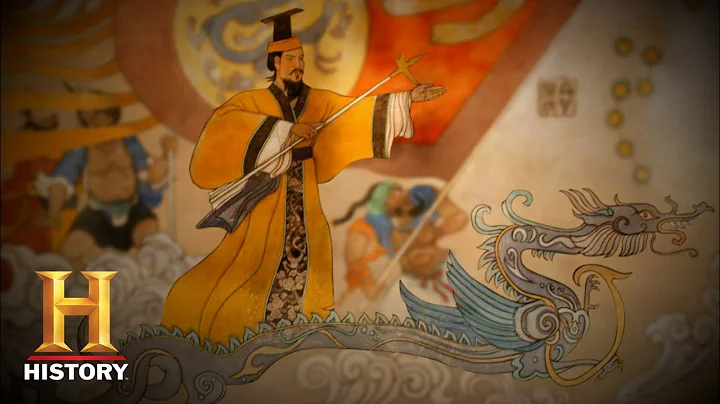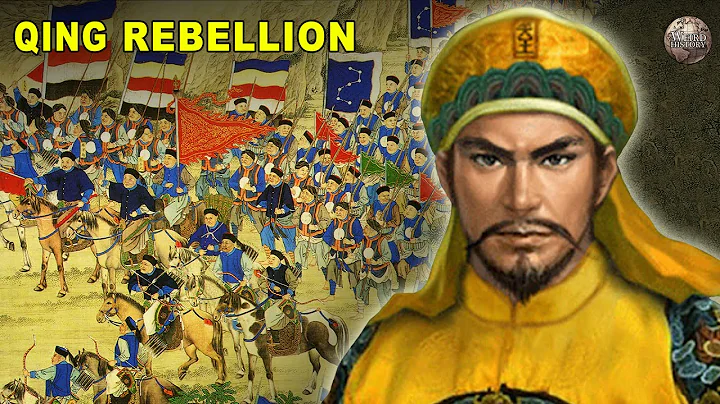
From the 63rd year of the Yellow Emperor to the 77th year of the Yellow Emperor, the development progress in the basin was extremely slow. The manpower left by the Changyi Department and the Xuanxiao Department was very limited, and Changyi simply could not take care of both ends.
During the original one or two years of inspecting the Chengdu Plain, Changyi found that there were many places in the Chengdu Plain that could be developed and utilized, so he sent tribesmen to explain the situation of the basin to his father Huangdi and his brother Xuanxiao.
Xuanxiao had been in the basin, so he naturally knew some of the conditions in the basin, so he found a time to explain the situation in the basin to Huangdi in person.
At this time, the Huangdi people, who were nearly 70 years old, were still full of ambition and ambition to expand the territory of China.
Huangdi was determined not to give up the Sichuan Basin . Since there were not enough manpower, he sent people from the Central Plains.

But who should be sent there?
At that time, the living standards in Qi, Lu and Henan had improved a lot. If other tribes were sent there, who would be willing to go to that remote and cold place?
After thinking about it, it seemed that the only option was to send his own children there. Among the Huangdi's wives, only Leizu were from the west, and the others were mostly from the Central Plains area. They were not happy to find anyone.
In the end, there was nothing to do, so Xuan Xiao suggested: "Select people from my land to go to the West Sea to see the effects!"
Huangdi nodded and agreed, and this became the "Xuan Xiao tribe" in ancient Shu.

In the seventy-eighth year of the Yellow Emperor, the basin welcomed the third batch of guests from Qilu . Following the guide, they went upstream along the Yellow River basin to Xi'an, entered Baoji via the Jialing River (Black Water), and went south along the ancient Chencang Road, passing Lueyang to Guangyuan Mianyang .
After joining the tribes left by Changyi and Xuanxiao in the area of Mianzhu and Shifang, it didn't take long before continuing southward, crossing the Jinma River to the west, and stationed in the Dayi highland area west of the Xihe River in Chongzhou today. Come down.
These were the first batch of Central Plains people from the Qilu area. They naturally retained the living habits and customs of the Qilu area, so that the ancient high mountain city of Dayi later had some legacy of the Qilu people's customs. Their main activity area was the large area in the southwest of Minjiang Yi, Chongzhou , Xinjin, Qionglai and most of Pujiang.
In the eighty-fifth year of the Yellow Emperor, the Yellow Emperor was indeed unable to take charge of political affairs at this time, so he handed over full power to Xuan Xiao, that is, Shaohao. After that, he turned his attention to the cultivation of subsequent talents. The Yellow Emperor sent special personnel to each branch of his descendants. During the middle school inspection, young people with good talents are selected for special training.
At this time, Zhuanxu, who was talented and loved by Lei Zu, stood out. At this time, Zhuanxu was already assisting his uncle Xuan Owl in handling political affairs.
Obviously, Huangdi wanted to cultivate Zhuanxu as his successor.
In the ninety-second year of the Yellow Emperor, the sixty-five-year-old Shaohao Xuanxiao died of overwork and illness.
The Yellow Emperor died six years later, and Zhuanxu succeeded to the throne.
From the 92nd year of the Yellow Emperor to the 98th year of the Yellow Emperor, Zhuanxu and the Gonggong clan fought for the position of leader. Although the Yellow Emperor was old, he still had power. In the end, the Gonggong clan was defeated and the Yellow River embankment flooded Zhuanxu's land. The death of Zhuanxu was extremely painful. This is the origin of the myth and legend that the Gonggong family "touched Buzhou Mountain with anger".

After Zhuanxu took the throne, he also intermittently sent many tribesmen and tribesmen to assist in the development of the basin, including the descendants of the Baihuang clan of the Hope tribe.
This is the later "Zhuan Xu Department" of ancient Shu.
The "Xuanhuo tribe" and "Zhuanxu tribe" arrived in the basin and lived together with the ancient Shu natives, leaving behind the Baodun culture that we know today.
Baodun culture originated from the handwriting of the ancient Shu natives from 2300 to 2500 BC. The arrival of the "Xuanxiao tribe" and "Zhuanxu tribe" accelerated the formation of Baodun culture.
Baodun culture should have the dual characteristics of the early ancient Shu and the Qilu area during this period. This is also the early intersection of ancient Shu culture and Central Plains culture.

Due to the geographical factors of Northern Sichuan, the living and activity areas are very scattered, and the preservation of the early culture of ancient Shu was not obvious and centralized. It was not until the birth of the descendants of the Qiang Han Cancong after the fusion of Changyi and ancient Qiang. There are relatively obvious ruins left.
During this period, the pattern of the Sichuan Basin gradually became clearer. The western part of the Chengdu Plain, today Pidu District, the western part of and a small part of Dujiangyan, were flat and had a few human activities. The central part of the Chengdu Plain was a paradise for birds and animals, with very few human activities;
The east of the basin is bounded by Longquan Mountain . To the east of Longquan Mountain are the Bashan people of Wushan and to the west are the Neijiang people of Ziyang; The collective name of the tribe), as well as Zhu Ti Chang Yi and his subordinates;
The basin is bounded by the Minjiang River and Yanshan Mountain in the west, and the west and southwest are the boundaries of the activities of the ancient Qiang people in western Sichuan;
The northwest and north of the plain, mainly They are the Changyi ethnic group and the Xuanxiao ethnic group. There are gradually some Xuanxiao and Zhuanxu ethnic groups from the Qilu and Central Plains areas in the southwest of the plain.

From 2300 BC to 2150 BC, about 150 years ago, there were no rapid changes in the Sichuan Basin, no amazing geniuses were born, and no foreign cultures invaded without a cloud. Leave, nothing, nothing.
There are only the ancient Qiang people who herd sheep silently, the ancient Shu aborigines who drink blood from their hair, and the Changyi Xuanxiao Zhuanxu ethnic group who work hard to cultivate wasteland around the Chengdu Plain.





















